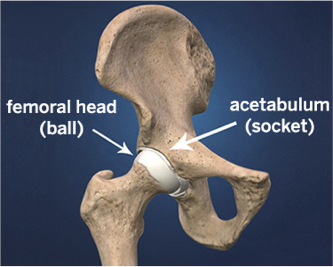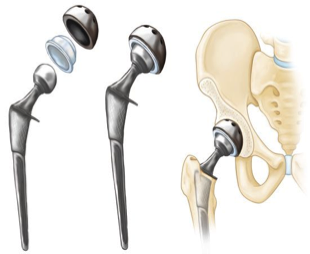Total Hip Replacement.
What is a Total Hip Replacement (THR)?
A Total Hip Replacement or sometimes called Total Hip Arthroplasty is where the ball (femoral head) and cup (acetabular fossa) of your hip get replaced with an artificial alternative. Depending on your presentation you may have either the cup section or the ball section replaced (hemi), or often both.
Why would I need a THR?
There are a few different indications for a THR, the most common one being osteoarthritis that is significantly limiting function and or causing disabling pain. In most cases conservative management is trialled first with a THR being the last case scenario. Other indications may include a fracture of the upper femur (thigh bone) and bone disorders such as avascular necrosis (death of bone tissue from lack of blood supply) or tumours.
What can I expect after a THR?
After your surgery it is common for the operated joint to be painful and difficult to move. Depending on your procedure you may be required to remain in hospital for generally less than a week where you will be seen by a Physiotherapist up to twice daily. In hospital you will in most cases be assisted to weight bear day 1 using a frame and to work through exercises to help restore range of motion and to strengthen muscles around your hip and knee. Once discharged from hospital you will attend outpatient Physiotherapy sessions to progress your exercises, restore strength around both your hip and knee and improve your walking and function.
Is there anything I shouldn’t do after my THR?
After a THR it is common to have hip precautions for approximately 6 weeks (can be longer depending on surgeon preference). You will be educated in hospital on what these movements are and be shown how to perform activities without breaking precautions. The movements that should be avoided will depend based on the surgical procedure and orthopaedic surgeon. The following are common precautions that you should avoid for the first 6 weeks…
Bending your hip past 90 degrees. This may include activities such as sitting in low chairs, driving, putting socks on, cutting toenails and bending over to pick something off the floor.
Crossing legs over each other or turning leg inwards. This may include activities including getting in and out of bed and reaching down to put shoes on.
Walking/stepping backwards. This may include lunging backwards or taking big steps to get back into a chair.
Can the team at Goolwa Physio help?
Our staff at Goolwa Physio can assist you to move better and restore muscle strength in your legs. Physiotherapy treatment will likely involve education regarding hip precautions and a guided exercise therapy program aimed at restoring full range of motion, strength around your hip and knee and achieve personal goals.
At Goolwa Physio we recognise that having surgery is a big deal and we can help you get better as soon as possible so book a consult today.



